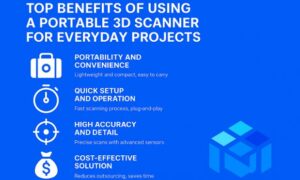The EB-5 Visa Program allows investors to get a green card by investing in United States enterprises. Investors can choose to invest in a regional center or make a direct investment as a standalone investor. Investors should make sure they find EB-5 projects that meet the United States Citizenship and Immigration Services (USCIS) requirements.
EB-5 Projects That Qualify for the Visa Program
To participate in the EB-5 Visa Program, you must invest in a new commercial enterprise (NCE) or a troubled business in the United States. The enterprise should be for-profit and meet these guidelines set by the USCIS:
- NCEs are for-profit organizations in the United States. To qualify for the EB-5 visa program, the NCE must have been created or restructured after November 29, 1990.
- Troubled businesses should have a minimum net loss of 20% of the businesses’ net worth. This loss must have been experienced within 12-24 months before receiving the EB-5 investment.
EB-5 projects can be completed in any U.S. industry or sector. Projects in real estate development, infrastructure, restaurants, hospitality, and tourism are often available to EB-5 investors. Any business or enterprise that meets these criteria can be approved for an EB-5 project.
Investment and Job Creation Requirements
To participate in the EB-5 Visa Program, you must meet the program’s minimum investment requirement. The minimum investment requirement is $1,050,000 or $800,000 if investing in a targeted employment area (TEA). USCIS-designated targeted employment areas are geographical regions that have an average unemployment rate of 150% or more of the national average unemployment rate. These regions can also include rural areas outside of metropolitan areas. Many regional centers offer EB-5 projects in TEAs because of the lower investment amount.
Your investment must also create or preserve 10 jobs for U.S. workers. These jobs must be created within two years of making your initial investment. If you invest with the help of a regional center, direct, indirect, and induced jobs can count toward this total. If you make a direct investment, you can only count direct employees toward the total number of created jobs. Program applicants who invest in troubled businesses may not need to create new jobs if they can preserve the existing jobs within the company.
Selecting an EB-5 Project
Selecting an EB-5 project depends on whether you want to invest in a regional center or make a direct investment. Regional centers can make it easier to meet the job creation requirements and can generally manage larger projects. They may also require less hands-on management from the investor than direct investments. Direct investments can be more risky but may provide higher financial returns depending on the chosen project. The type of investment that you choose to make will depend on your goals, risk tolerance, and entrepreneurial experience.
Conducting due diligence can help decrease your investment’s risk. No matter which type of investment you decide to make, look for a project with a strong business plan and promising job-creation potential. If you choose to invest with a regional center, research their experience and success rates. Seek advice from experienced EB-5 professionals, such as immigration attorneys. Taking these steps before selecting a project can help you find a project that results in a successful investment and a permanent green card.
Obtain a U.S. Green Card Through the EB-5 Visa Program
Choosing a qualifying investment project can help you succeed in the EB-5 Visa Program. Whether you decide to invest through a regional center or as a standalone investor, make sure to choose a project that can meet the job creation requirements and the USCIS guidelines. By conducting due diligence on potential EB-5 projects and collaborating with experienced professionals, you can improve your chances of receiving a U.S. green card through the EB-5 Visa Program. Contact an EB-5 regional center or immigration attorney today to learn more about EB-5 projects.



































